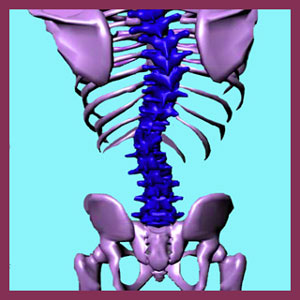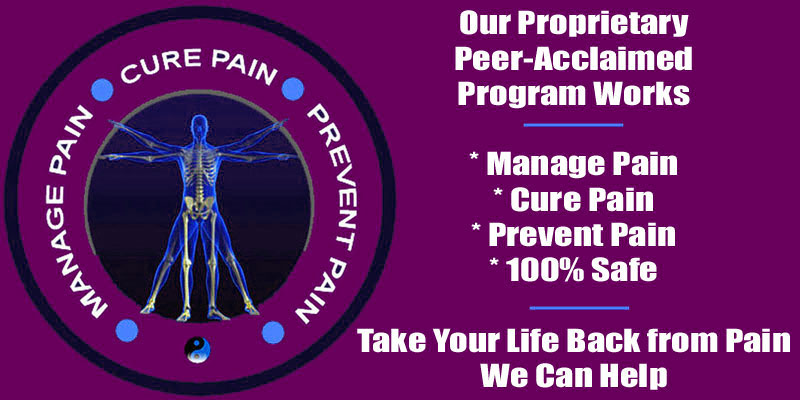
Scoliosis symptoms are rare, since most mild to moderate side-to-side spinal curvature is asymptomatic. Some scoliosis can cause back or neck pain, as well as neurological symptoms, difficulty breathing and internal organ concerns. However, it should be clearly noted that these symptomatic profiles represent the gross minority of scoliosis scenarios.
For many years, patients who had back or neck pain and incidentally demonstrated scoliosis, were deprived of proper diagnostic evaluation and their symptoms were often unjustly blamed on the atypical vertebral column curvature. Many of these patients suffered needlessly, since there was help available for their true cause of pain, had it simply been discovered and treated. However, times have changed greatly and doctors now understand that scoliosis is mostly an innocent condition that does not cause pain in the majority of affected people. Therefore, all scoliosis patients are likely to receive comprehensive analysis of any dorsalgia complaint, despite their atypical curvature. Progress is a very good thing, but not all is perfect in the realm of scoliosis diagnosis and treatment.
This resource section provides complete coverage of the possible symptoms of side-to-side spinal curvature. We will explain why most scoliosis is not symptomatic and how it can become so, given particular patient circumstances.
Lack of Scoliosis Symptoms
Most scoliosis creates signs of its existence, but does not cause pain. Typical signs of scoliosis include any or all of the following anatomical phenomenon:
- Visual presence of curvature in the spine from dorsal view
- Head out of alignment with the rest of the body
- Shoulders uneven at 2 different heights
- One shoulder may project forward more than the other
- Hips uneven at 2 different heights
- One hip may project forward compared to the other
- Uneven leg length
- Ribs might be more prominent on one side
- Person might noticeably lean towards one side
- Patient might demonstrate forward head posture
Most people who express these anatomical changes will do so in insignificant degrees. The vast majority of scoliosis is rated as being inconsequential at less than 10 degrees curvature (does not qualify to be called true scoliosis) or between 10 and 20 degrees curvature (mild scoliosis). Virtually all of these conditions are considered to be universally asymptomatic. The body is miraculous in its ability to compensate for the changes mild scoliosis entails, allowing the person to be strong, healthy and fully-functional, despite having a slightly irregular spinal configuration.
Presentation of Spinal Curvature Symptoms
Moderate scoliosis is rated between 20 and 50 degrees of curvature. Most cases are still not symptomatic or are only mildly symptom-producing. However, some cases, particularly in the upper end of the moderate rating spectrum, can become symptom-generating. Severe scoliosis rated at above 50 degrees of curvature is generally symptomatic, but this is not a rule. Many patients demonstrate very significant curvatures, but do not have any substantial pain or functional disabilities whatsoever, despite obvious changes in their visual postural presentation. Cases of scoliosis involving extents of curvature exceeding 70 degrees will usually be considered pathological and will likely produce some form of clinically significant symptomology. Some cases will be extremely symptomatic and may even prove to be prematurely fatal in very rare circumstances, especially when proper treatment is unavailable.
Scoliosis Symptom Topics
Below are listed a range of topical articles related to potential scoliosis symptomology. As each new treatise is published, it will be made available in the following list:
Scoliosis pain might be related to neurological compression or mechanical dysfunction. Many cases of scoliosis back pain and/or neck pain are not motivated by the skeletal changes, but instead are related to soft tissue pathologies in the muscular tissues. Therefore, many of these scenarios are easily treated with conservative therapy.
Scoliosis flare-ups can occur for known or unknown reasons. If a patient begins to experience patterned flare ups, the scoliosis might become disruptive to life, although many cases might be created by circumstances not directly linked to the structural presentation of scoliosis itself.
Scoliosis foot drop is often linked to neurological compression of a nerve roots in the lower back, but can also come about from other possible circumstances, including piriformis syndrome and regional ischemia.
Scoliosis incontinence and constipation are also commonly linked to nerve dysfunction due to structural compression. These symptoms can be structurally-motivated due to compression of the spinal cord or spinal nerves in severe instances of side-to-side backbone curvature.
Scoliosis sexual dysfunction can occur due to nerve impingement in the lumbar and lumbosacral spinal regions or due to oxygen deprivation of the involved nerve tissues. Some patients reporting sexual dysfunction are actually capable of performing intimately, but simply can not enjoy the act, due to related pain in particular positions or activities. These later circumstances are usually easily treated with targeted therapy or lifestyle modifications.
Scoliosis sciatica is a very common symptom in severe and extreme cases of spinal curvature, since these profiles tend to facilitate sciatic nerve symptoms though a variety of possible mechanisms, including nerve root compression, piriformis muscle spasm, sacroiliac joint issues and even mindbody concerns.
Scoliosis Symptoms Statistics
It is vital to know and accept that most scoliosis is not symptomatic. This fact will go a long way in preventing the fear and misinformation-induced nocebo effect that can indeed enact significant pain and related expressions. The manner in which patients are managed by care providers is one of the major factors in determining who will and who will not begin to demonstrate pain at some point after a positive diagnosis of scoliosis. We found the mindbody interactions to be very active in scoliosis patients and many can be kept asymptomatic at even very significant levels of curvature through proper “bedside manner” and exposure to factual evidence of the mostly innocent nature of atypical curvature. However, opportunistic care providers can use the nocebo effect to their advantage and often do to literally force patients into treatment that is likely to be unnecessary and may even become the direct source of pain.
Let’s move forward and learn more about the closely-related mind and body consequences of scoliosis.
If you have pain in association with scoliosis, our proven program can help. Cure Back Pain Forever is the only program to work in three distinct ways to prevent, manage and cure pain from a variety of sources. No wonder it has received so many accolades from notable doctors and healthcare organizations.
Scoliosis > Scoliosis Symptoms





